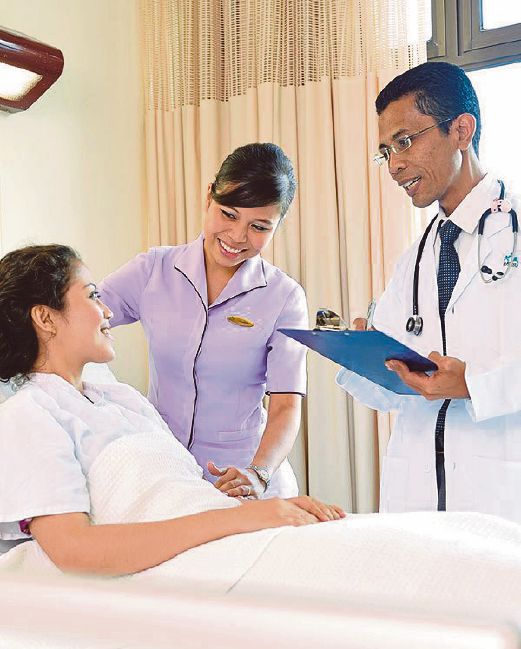Medical tourism is a key income-generator, writes Aznim Ruhana Md Yusup
WHEN Yusliani Dollah was diagnosed with diabetes and high blood pressure, she spent some time considering her next medical move.
Yusliani, who is in her 60s and lives in Medan, Indonesia, quickly discovered that her best option was to go to Penang.
She flew there with her doctor and spent the next few days after her treatment to visit her Malaysian relatives and to take in the sights, including Putrajaya and the Petronas Twin Towers in Kuala Lumpur. Yusliani is one of the hundreds of thousands of Indonesians who come here to seek medical treatment.
Penang is less than an hour away by air from Medan so a lot of Indonesians go there, but Malacca is also a major player in the medical tourism industry. According to Stanley Lam, CEO of Malacca’s Mahkota Medical Centre (MMC), we are a natural choice for Indonesians seeking medical care that they can’t get in their home country.
“The logistics is there — Malacca for example, is so near. And our culture is very much alike. We also have other advantages like our tourist spots. The cost is also very competitive, not just for the medical treatment but also for accommodation and food,” he says.
For a lot of Indonesians, the cost of treatment in cities like Jakarta can be more expensive than here. He also believes that the level of competency among our doctors is higher.
Between six and seven thousand patients from Indonesia come to MMC each month for various procedures.
“We don’t give preferrential treatment to anyone, whether they are locals or tourists. It’s always a first-come first-serve basis,” he says. “In terms of quality in treatment, the more you do, the better you are at it. A surgeon at a busy hospital tends to be better exposed to various types of cases, so the doctor is more skilled.
“It doesn’t reduce the quality of healthcare provided to locals but instead, enhances it. Some diagnoses are perhaps more common in Indonesia and happen less here. All these help doctors become better at their job.”
FLIGHT PLAN
Lam says MMC has been engaging with the State government to get more flights into the airport in Batu Berendam. At the moment, there is only one commercial flight operating there, from Pekanbaru in Sumatra.
Most Indonesian patients would fly into LCCT in Sepang and then go to Malacca by road. According to its website, MMC also provides shuttle services to and from jetties in Johor and Malacca.
It is a significant indicator of the background of patients that come to MMC. “Our layer of market is not the high-end market — we cater more to the middle-range market. The high-end market travels to Singapore for treatment instead,” he says.
“This is because Singapore has been doing this for far longer. ”
Lam says the strong Singapore dollar has benefited our medical tourism industry. “Treatment in Singapore is very expensive nowadays, so Malaysia will be the second or the first alternative choice. That works well for us,” he says.
MULTIPLE EFFECTS
As people in neighbouring countries like Indonesia and Cambodia become more prosperous, they tend to seek better healthcare. It takes a while for the local healthcare system to catch up, so this is where Malaysia comes in.
It’s different from targeting patients from wealthier nations such as the US, where the issue is mostly about the cost. A heart transplant in America can go up to more than RM400,000 while a similar procedure here may cost less than RM30,000.
But Lam says it’s difficult to target that kind of customer because of the distance. As such, MMC focuses its efforts on patients in the region and has 16 representative offices in Indonesia, and one each in Cambodia and Myanmar.
He believes the positive effects of medical tourism can be seen in other sectors as well, such as in retail and the hotel industry.
“Tourists may spend two days and one night in Malacca but medical tourists stay longer. Their families who accompany them will also need a place to stay. As long as the cost is competitive, the clinical outcome is good and the service is decent, people will continue to come,” says Lam.
Malaysia’s push for a bigger slice of the medical tourism pie is being helmed by the Malaysia Healthcare Travel Council. It is a Health Ministry initiative aimed at facilitating the public and private sector collaboration to promote and position the country as a healthcare destination.
According to the Ministry’s records, there were more than 340,000 healthcare travellers to Malaysia in 2007. This number has more than doubled in the years since, and it estimates that over 770,000 people visited Malaysia in 2013 with the aim of getting medical care.





